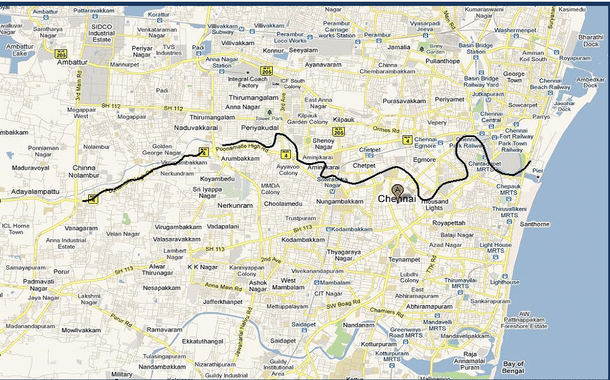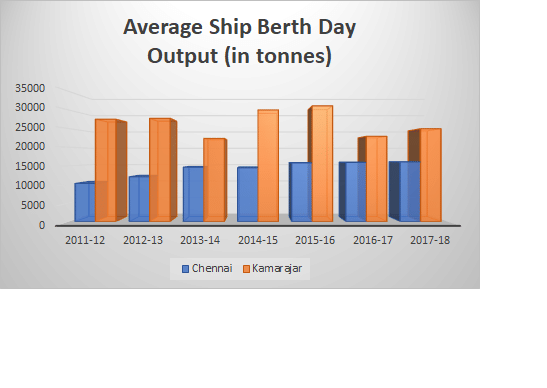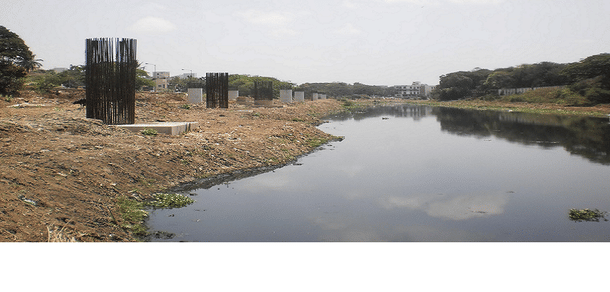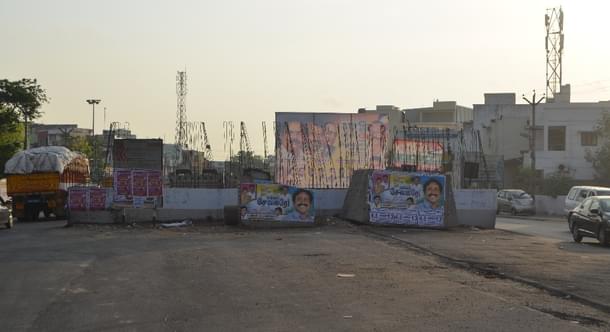Infrastructure
Chennai Port Awaits Its Elevated Corridor To Attract More Business
M R Subramani
Apr 23, 2018, 05:43 PM | Updated 05:43 PM IST
Save & read from anywhere!
Bookmark stories for easy access on any device or the Swarajya app.
On 3 December 2016 – two days before the death of the then Tamil Nadu chief minister J Jayalalithaa – Chennai port authorities received an official letter from the Tamil Nadu government that took them by surprise. In the letter, the state government expressed its willingness to go ahead with the Maduravoyal-Chennai Port elevated corridor project that had been stalled since March 2012. In fact, the project that began in 2009 was in a limbo ever since Jayalalithaa’s All-India Anna Dravida Munnetra Kazhagam (AIADMK) government rode back to power in May 2011.
In January 2009, the elevated corridor project, a four-lane 18.5 km-long road, was inaugurated by then prime minister Manmohan Singh. Actual work began on 14 September 2010 before the Jayalalithaa government ordered a halt on 29 March 2012. The reasons cited by Tamil Nadu was that the National Highways Authority of India (NHAI) was deviating from approved alignment and was locating the piers of the elevated road inside the riverbed.

NHAI and Ministry of Roadways and Highways took up the issue with the state government. Despite repeated efforts, the AIADMK government failed to respond, resulting in NHAI challenging the stoppage order in the Madras High Court. On 20 February 2014, the High Court asked the Tamil Nadu government to extend full cooperation to the project, but it took another two and a half years before there was some movement in the project implementation.
“Had the project been executed as scheduled, it would have got over by 2013 and we would have benefitted,” says G Srinivasan, deputy engineer (Civil), Chennai Port. It would have helped the Chennai port immensely by now.
The elevated corridor was one that would have given the Chennai port a fresh impetus to attract more business. The port has been suffering on two accounts – competition from Kamarajar port that was set up as a satellite facility at nearby Ennore to handle dirty cargo like coal and iron ore; and rapid rise in traffic on Chennai roads leading to the port’s gate.
Kamarajar port was set up in 1999 after the Madras High Court ruled that Chennai port shouldn’t handle coal and iron ore cargoes anymore. (An appeal has been filed in the Supreme Court against this and the case is pending.) Unfortunately for Chennai port, Kamarajar port, which was to complement Chennai port’s services, was corporatised and it began to offer services at competitive rates. As Chennai port was under the control of the Centre, its tariffs are fixed by Tariff Authority for Major Ports (TAMP) and it didn’t have any freedom to offer attractive rates to lure business. (A proposal to allow major ports to fix their own tariffs has been made and it could be soon made into a law.)
An expanding Chennai city and growing traffic meant that trucks carrying cargo or containers to and from the port didn’t have 24x7 access. “During peak traffic hours, movement of trucks is restricted. We are not able to keep the main gates open always in view of this,” says Srinivasan. All these have affected Chennai port, whose finances are stretched from the huge outgo of about Rs 600 crore on salaries and pensions. During 2016-17, the port earned a profit of Rs 13.56 crore on an operating income of Rs 713.09 crore. During 2017-18, profit is reported to have increased to Rs 32 crore. At the same time, Kamarajar Port earned a profit of Rs 488 crore on an operating income of Rs 681.42 crore in 2016-17.

Shrinking business for Chennai port meant that the central government or the Chennai port had to come up with something to tap its potential. It was in this regard the Maduravoyal-Chennai port elevated corridor project was inaugurated in 2009. Nearly 15 per cent of the work relating to the project had been completed when it was stalled on orders from the Jayalalithaa government. Off-the-record sources would tell you that the objection was more of an ego issue because it had been initiated during the Dravida Munnetra Kazhagam (DMK) rule. (Remember, how the new secretariat building on Anna Salai was converted into a government super specialty hospital?)

After the go-ahead from the state, a team of experts from the National Highways Authority of India, Chennai Port Trust and Tamil Nadu government had discussed the re-alignment of the corridor. “We have agreed to re-alignment of the corridor. The project will now be revived. A detail project report is being prepared and it will be submitted by April end,” Srinivasan said.
Tamil Nadu has asked NHAI to replace two-piers with one on a stretch of nearly 2 km on the Cooum river near Chetpet. It has asked for a re-alignment in structure without disturbing defence quarters near Napier Bridge. The elevated corridor will retain some the pillars that have been constructed on the Chennai-Bangalore National Highway and in parts of Chennai on Cooum river. A sum of Rs 318.14 crore had already been spent on constructing some of the pillars and piles.
The project will now have six lanes from Maduravoyal to Napier Bridge near the port. After Napier Bridge, it will be a four-lane highway.
The Rs 1,822 crore project had two components – Rs 1,345 crore for construction of the elevated corridor and Rs 477 crore for resettlement and rehabilitation of 7,400 families and 458 commercial business that will be displaced by the construction of the elevated corridor. The Rs 477 crore component is unlikely to see any cost escalation since the realignment will likely bring down the number of those likely to be resettled and rehabilitated. Most of the lands that will be taken up for the project belongs to the state government. Resettlement and rehabilitation will not consume much time since the Tamil Nadu Slum Clearance Board has built the units for the people likely to be affected by the corridor.
The cost of the project will likely escalate and the Ministry of Roads and Highways has said the elevated highway could cost Rs 2,000 crore. Lending an ear to demands from industries, the ministry has decided to extend the highway in the second phase from Maduravoyal to the Outer Ring Road near Poonamallee or Sriperumbudur at an additional cost of Rs 1,500 crore.

Funds will be sought for the elevated corridor under the Bharatmala project, a centrally-funded project for roads and highways. After the detail project report is submitted, the authorities will identify the company that will execute the project, including collection of toll. “There will be toll payment for this corridor,” said Srinivasan. Once these things are finalised, the authorities will tie-up funds. The project will likely resume from early 2019 and be completed in 2021-22. Until then, Chennai port’s wait to improve its business will continue.
M.R. Subramani is Executive Editor, Swarajya. He tweets @mrsubramani





